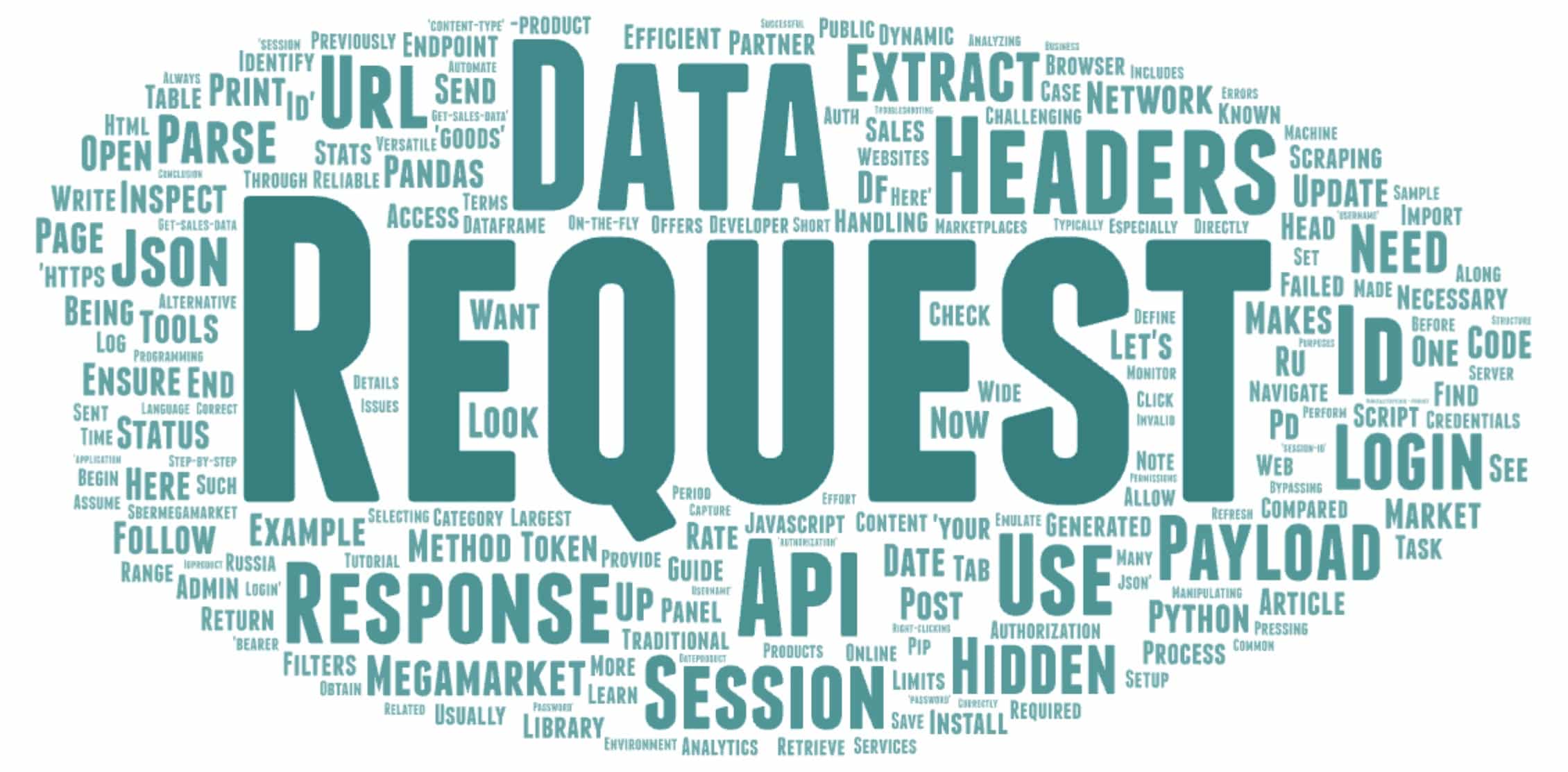
Parsing dynamic websites can be a challenging task, especially when the content is generated on-the-fly using JavaScript. This article will guide you through the process of parsing the Megamarket admin panel using hidden APIs. By the end of this article, you’ll learn how to find and use hidden APIs to extract the data you need efficiently.
What is Megamarket?
Megamarket, previously known as Sbermegamarket, is one of the largest online marketplaces in Russia. It offers a wide range of products and services. However, it does not provide a public API for accessing its data, which makes it necessary to find alternative methods for data extraction.
Why Use Hidden APIs for Parsing?
Using hidden APIs for parsing is often more reliable and efficient compared to traditional web scraping methods. Hidden APIs allow you to directly access the data from the server, bypassing the need to parse the HTML content generated by JavaScript.
Tools and Setup
To follow along with this tutorial, you will need the following tools:
- Python: A versatile programming language.
- Requests Library: For making HTTP requests.
- Pandas Library: For handling and manipulating data.
- Browser Developer Tools: To inspect network requests.
Step-by-Step Guide
1. Setting Up Your Environment
Before you begin, ensure that you have Python installed on your machine. You can install the necessary libraries using pip:
<code>pip install requests pandas</code>2. Inspecting Network Requests
Open your browser and navigate to the Megamarket admin panel. Log in using your credentials. Open the Developer Tools (usually by pressing F12 or right-clicking on the page and selecting “Inspect”).
Navigate to the “Network” tab to monitor the network requests being made. Refresh the page to capture all the requests. Look for requests related to data you want to extract. These requests usually have endpoints that return JSON data.
3. Identifying the Hidden API
Identify the request that returns the data you need. In this case, let’s assume you want to extract sales data. Look for a request with a URL that includes terms like “stats” or “analytics.”
Here is an example of what you might find:
<mark style="background-color:rgba(0, 0, 0, 0)" class="has-inline-color has-black-color"><code>https://partner.market.ru/api/v1/stats/get-sales-data</code></mark>4. Analyzing the Request
Click on the request to inspect its details. Note the following:
- Request URL: The endpoint URL.
- Request Method: Typically POST or GET.
- Headers: Required headers such as authorization tokens.
- Payload: Data sent with the request.
Here is a sample payload you might see:
<code>{
"date_from": "2024-05-01",
"date_to": "2024-05-31",
"filters": {
"category_id": "12345"
}
}</code>5. Writing the Python Script
Now, let’s write a Python script to emulate this request and extract the data.
import requests
import pandas as pd
# Set the endpoint URL and headers
url = 'https://partner.market.ru/api/v1/stats/get-sales-data'
headers = {
'Authorization': 'Bearer your_token_here',
'Content-Type': 'application/json'
}
# Define the payload
payload = {
"date_from": "2024-05-01",
"date_to": "2024-05-31",
"filters": {
"category_id": "12345"
}
}
# Send the request
response = requests.post(url, headers=headers, json=payload)
# Check if the request was successful
if response.status_code == 200:
data = response.json()
df = pd.DataFrame(data['goods'])
print(df.head())
else:
print(f"Failed to retrieve data: {response.status_code}")6. Handling the Session ID
If the request requires a session ID, you will need to automate the login process to obtain this session ID. Here is an example:
login_url = 'https://partner.market.ru/api/v1/auth/login'
login_payload = {
'username': 'your_username',
'password': 'your_password'
}
# Perform login to get session ID
login_response = requests.post(login_url, json=login_payload)
session_id = login_response.json().get('session_id')
# Update headers with session ID
headers.update({'Session-ID': session_id})
# Now send the request with updated headers
response = requests.post(url, headers=headers, json=payload)
if response.status_code == 200:
data = response.json()
df = pd.DataFrame(data['goods'])
print(df.head())
else:
print(f"Failed to retrieve data: {response.status_code}")Common Issues and Troubleshooting
- Invalid Session ID: Ensure that you are logging in correctly and the session ID is being updated in the headers.
- Rate Limits: Some APIs may have rate limits. Ensure you are not sending too many requests in a short period.
- Authorization Errors: Check if your token or credentials are correct.
Table Example: Sales Data
Here is an example of how you can structure the extracted sales data in a table using pandas:
| Date | Product ID | Product Name | Sales | Revenue |
|---|---|---|---|---|
| 2024-05-01 | 12345 | Product A | 100 | $5000 |
| 2024-05-02 | 67890 | Product B | 150 | $7500 |
| 2024-05-03 | 23456 | Product C | 200 | $10000 |
Conclusion
Parsing the Megamarket admin panel using hidden APIs can save time and effort compared to traditional web scraping methods. By following this guide, you can efficiently extract the data you need for your analytical or business purposes. Always ensure you have the necessary permissions to access and use the data.






Comments (0)
There are no comments here yet, you can be the first!